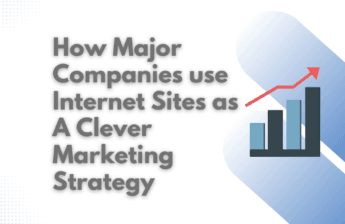Rarely do I take a negative viewpoint on new developments, especially in technology. But lately, with the seemingly runaway rise of highly successful social networks like Facebook and Twitter, it’s become clear that adding the word “social” to virtually any product or service has become the current marketing trend du jour, often to the detriment of the consumers of those offerings.
While this inevitably happens with many new developments, particularly in the highly fad-driven technology industry, it does unfortunately quickly rob important new concepts of their original meaning and implications. Worse, it misleads those who are seek to understand, access, and apply the concepts that have become so singularly successful and which drove so much interest.
The social meme has now fallen prey to this and frankly it’s at serious risk of losing what makes it special, at least in terms of the modern 2.0 era. All of the new uses of “social” in the online world: Social media, social marketing, software software, social networking, and so on, can be — and often are — extremely potent new methods for creating value with human relationships over the network. They can represent truly important, even revolutionary, new changes in the way to we interact with each other in our lives and businesses. As long as we can still discern how and why they do this, that is.

What makes modern social systems unique is not-so-slowly being leached of its very uniqueness and value because what makes them work well is frequently becoming so diluted or just outright ignored that almost any communications product, new or old, effective or ineffective, is now being heralded as “social.” Unified communication is just one recent example of this. Claims that you can use a Twitter account to turn around your customer service are another. These things can certainly help make a business social, but they are just the means to a long journey; a new way of operating a business in a more open, emergent, and efficient way.
This was driven home to me recently when I was presented with yet another new social media marketing site that had been developed for someone at the reported cost of six figures and with little more than a Twitter feed, a MySpace badge, a blog, and some brochureware content. The bad news: This is not uncommon these days in the social media business. But it’s not social business.
Backstory: The emerging case for open business methods.
There is a very important conversation happening right now in organizations around the world. It’s how those companies are going to make the transition from traditional 1-to-1 relationships with their partners and customers to a one-to-many community relationship where the company is only another member of an endless ongoing conversation. This conversation will be the very lifeblood of companies in the future and consist of all the ideas, concerns, solutions, news, learning, product development, sales, marketing, customer service (i.e. the fundamental fabric of the organization) taking place between anyone, anywhere who feels they have a stake. Considering this for a moment only underscores what a weak and underdeveloped version of this most businesses have today.
So, social business. It’s the larger part of where the value lies.
Major Fortune 500 organizations have started this process. Sears and Kmart launched social sites this week (see a good discussion of this topic on Friendfeed) directly aimed at beginning the journey of becoming social businesses. Limited visions but probably the right direction.
Another good example of organizations taking the first steps in this direction is Best Buy’s excellent new video from CMO Barry Judge who, while going through great pains to use the just right social code words such as “empowering” and “conversation”, also takes exactly the right tack, noting that they just encourage participation by their employees in the new online conversations. No policies, no politics, no procedures, just social.
But for most of us to really get strategic value from social business, we’ll need to understand the ground rules. In other words, let’s ask and answer the tough questions in making this transition:
- Are social business activities generally better than non-social business activities?
- How does having a social business help the bottom line and the long-term health of an organization?
- What, in the end, does “taking a business social” really mean?
To answer these questions, and to put some of the meaning back into the social Web, here are 12 rules that can help you focus on what really matters and how to access the fundamental value inherent in social business:
Twelve rules for taking your business social
- Social businesses are made of people. Just like soylent green , the network (the Web or enterprise or both) is about who is on it and how involved they are. Whether this is a customer community, an internal Enterprise 2.0 effort with blogs, wikis, or just a corporate social network, the transition to social business is about involving and engaging people far more than it is about picking a technology or building the infrastructure. If your budget for community management isn’t several times your technology budget, change your priorities now. Don’t forget, however, that selecting the best technology and building top-notch infrastructure is vital too. Which takes us to…
- The right tools and infrastructure naturally enable good social business. I dislike talking about technology too early but I continue to see a lot of people using the nearest tool at hand, rather than the right tool for the job. The Web 2.0 era (the last five years or so) has shown that there where many important design patterns that were missing in the software models we used on our networks previously. Just as importantly, there were too many things crammed into our old software tools to make them easier to use or to enable social computing. Look here to some of the key elements, but building network effects simply, naturally, and easily is one of the most important.
- Foster conversations with your customers, partners, employees, and everyone else that’s interested. There is no simpler or more effective way to build the connections and your social business fabric than creating conversation. Actively and steadily draw them in to create value, whether that’s new ideas, business, happier customers, or new employees. It can, however, be hard, frustrating work and certainly very time consuming. Scale is also one of the bigger challenges of social business, but we are slowly learning how to deal with this. But sitting back and waiting for the world to involve your business in what they do is just no longer an option. Too often, they will just go off to the communities that have already engaged them and that will be that. “Experience share” is your new measure of success, meaning the amount of time that the world interacts with you socially.
- Popular social channels and services are important but are the smaller part of the social business story. There will always be new Facebooks and Twitters. They will rise and some will fall. These services do however get a lot of attention in the press (remember the fad driven comment I made at the beginning) but the reality is that most of your customers will not be using these services. They will be elsewhere on the network. You have to be there too. This is Jakob’s Law, a very important but all too frequently neglected rule of networks that are made of people.
- Put the community first. I made this the first commandment of online communities last year and I believe it’s still one of the most important tenets, if not the most important. Get this right and it’s not if you’ll succeed in social business, but by how much. As I said then, “communities exist to serve the needs of their members” and themselves second if they intend to have a successful long-term relationship, as in most human relationships.
- Add a social dimension to your business processes. Slowly, steadily, and where it makes sense. Like we learned on the Web, we close down and make private far too much information and activity in our businesses. A great deal of what we do in business greatly benefits from transparency, additional eyes, and more input with contributions from different perspectives. We often shy away from scrutiny and what we perceive as meddling but this is a naive and I’ll say it, an often childish, point of view. Social business doesn’t mean we throw open the doors to everything automatically as a public process either. But we are usually so far in the other direction that a step towards this is just the right medicine right now. And yes, I get asked this frequently, it applies to any organization, whether it’s private, public, government, non-profit, etc.
- Rethink your views on intellectual property in a highly social world. The famous letter sent by Apple to the little girl who had ideas about how to improve the iPod is a classic example of how we still look at business in an anti-social way. We are moving from the All Rights Reserved era of copyright, patents, and commercial licenses to the Some Rights Reserved era of Creative Commons and open source licenses. Value will pour in over the network to social businesses that are ruthlessly fair with their contributors (really, their partners.) Don’t make little girls cry.
- You manage to what you measure; use a social yardstick. Being social on the network in constructive ways is not something that businesses are measured for yet on Wall Street. Social analytics, however, are already here and this story is about individuals anyway. If workers aren’t measured by how effective they are at creating value on the network, they will just focus on what they are measured on to get their recognition, raises, and promotions. This is a complex subject that will often have very different ground rules for different organizations. Understanding it for yours and using the right measures will take time to achieve but ultimately will be very important to becoming a social business.
- Do not use social channels for traditional push communication. Classic examples: Don’t use online communities for distributing press releases, product literature, PR, or spokesperson canned messages. Sure, you can always tell your community about something new. But make it personal. You wouldn’t sent your friend a press release. Neither would a social business. It’s a conversation, start one and tell the world what you’re thinking.
- Censorship kills participation. Nothing will stop a social business in its tracks faster than inappropriate censorship. Appropriate censorship is an entirely different subject and involve removing offensive and illegal content from any part of the conversation under your control. The line is hard to find sometimes, and it can often be enormously difficult for companies not to censorship something negative about them, especially when a top manager requests it. But nothing will remove you from the world of social businesses faster or more effectively. Honest, open conversation is always the better choice and is truly valuable in its own right. Respond to criticism constructively and quickly.
- If you’re not sure where your organization ends and the network begins, you’re doing it right. It’s another subject that makes traditional businesses very uncomfortable but it’s largely manageable and more significantly, important. If you are working closely with customers, partners, employees using social tools (as well as people are potentially want to be in one of those three groups) the more you do it, the more it will seem as if there is one cohesive community. Where one gets a paycheck and what organization’s name is on a business card is less important than the fact that everyone is getting more value than if they were doing things in a non-social way.
- Healthy social businesses explicitly extract value from the network. This also isn’t talked about enough and it’s not shameful subject at all as long as it’s forthright (it’s also about give and take; you can’t take if you don’t give). The basic rule: Everyone involved in a social relationship must get something out of it or there’s no reason for it. Being social for it’s own sake may generate downstream value accidentally but social businesses will often have a long list of intentional reasons they are being social. This can range from gathering new product ideas (even jointly co-designing products with the network: aka crowdsourcing), identifying trends in their customer bases, to helping partners build on top of their ecosystem. Peer production has become an enormously important force for open business models and social business are based on this concept.
There are almost certainly a lot more rules for social businesses, but we’re still learning them. The economic models, the ROI, and the opportunities are all there for those that will look for them, but changing out thinking and becoming social business “natives” is going to be the biggest challenge.
I’m hoping you’ll add anything I’ve missed below in comments.
Recommended Reading:






